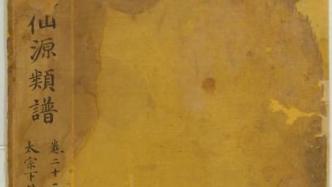
The exhibition "Jade Genealogy - Exhibition of Rare Genealogy Collections" curated by the Shanghai Library's Genealogy Theme Hall was officially opened to the public on November 7 in the Genealogy Hall of the East Library above. The exhibition selects 25 rare family trees from the nearly 40,000 kinds of family trees shown above for display, and popularizes genealogical cultural knowledge to readers from the perspectives of royal jade certificates, the evolution of family trees in the Ming and Qing Dynasties, and ethnic minority and foreign genealogies. In the exhibition, the Song royal family genealogy "Xianyuan Leipu" is the earliest jade certificate that can be seen today; the ones on display that are particularly closely related to Shanghai are the "Dong Family Genealogy" in Songjiang, Shanghai, from which the Ming Dynasty calligrapher and painter Dong Qichang came; Shanghai According to the "Lu Family Genealogy", Lujiazui in Pudong is named after the Lu family's former residence and ancestral tomb of Lu Shen.
Zhang Xuecheng, a scholar of the Qing Dynasty, said in his "General Meanings of Literature and History": "The husband's family has a genealogy, the prefectures and counties have aspirations, and the country has history, which has the same meaning." Comparing family trees with local chronicles and national history shows the importance of family trees. Family trees not only carry the history of a family, but also witness changes in all aspects of society through written records and the circulation of physical versions.
According to reports, the Shanghai Library now has nearly 40,000 types of genealogy, more than 370,000 volumes, and 524 surnames. It is the public collection institution with the largest collection of original Chinese genealogy at home and abroad, and has the reputation of "the first collection of Chinese genealogy in the world." The Genealogy Theme Library in the East Branch of Shanghai Library is one of the few unique theme libraries in the country and even the world that is supported by genealogy collections. It has obvious advantages in quantity and quality of genealogy collection resources across the country.
The "Exhibition of Jade Genealogy and Treasures" is divided into three categories according to content and form: Fufusihuang (Royal Jade Documents), Yuanzheqibian (Evolution of Genealogy in the Ming and Qing Dynasties), and Lingyu Tongfeng (Genealogy of Ethnic Minorities and Foreign Countries). sections. The selection of exhibits this time not only focuses on the cultural relic value and documentary value of family trees, but also focuses on the presentation of diversity in family trees. For example, in terms of version types, there are not only manuscripts, manuscripts, and manuscripts, but also wooden movable type, clay movable type, and copper movable type. , lithographs, photocopies, etc.; in terms of types, there are family trees, genealogies, genealogies, family records, genealogies, jade certificates, etc., including almost all types of ancient Chinese genealogy books. However, due to exhibition conditions, some of the exhibits are replicas.
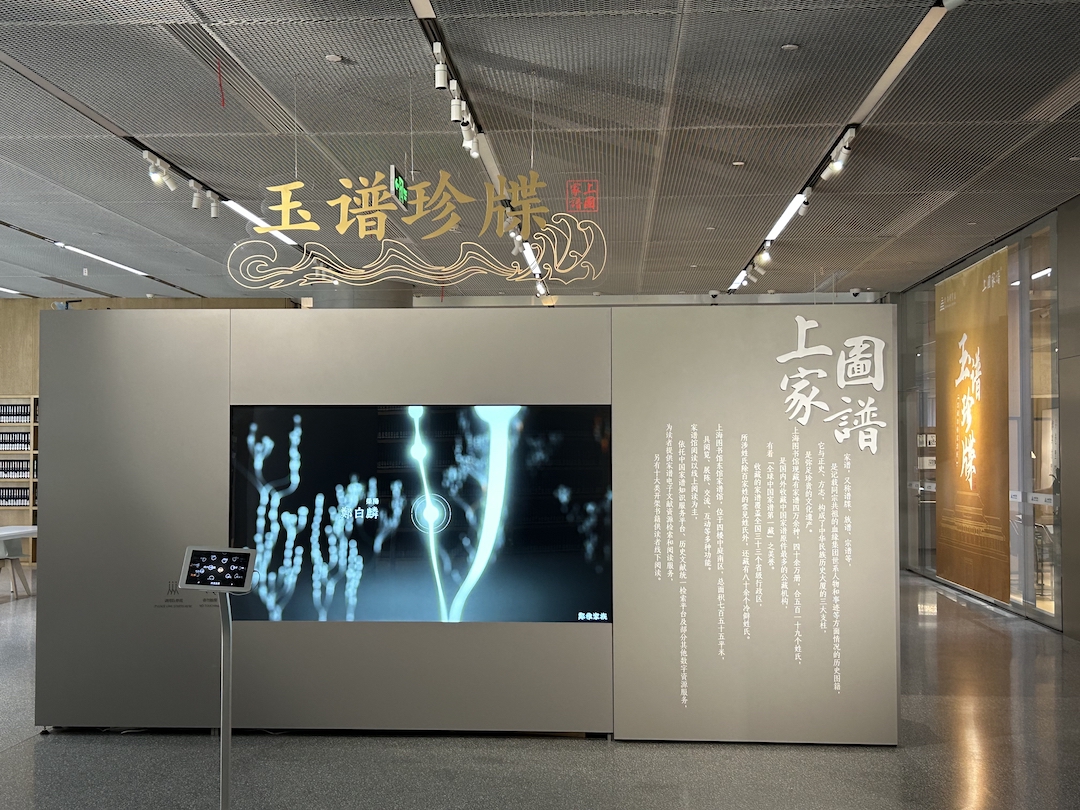
exhibition site
The first section of the exhibition, "Fu Fu Si Huang", displays royal jade ultimatums. Royal genealogy, also called jade certificate, is a genealogy book that records the genealogy of the emperor and the emperor's family. Royal genealogy is rarely disseminated among the people and is a very special type of genealogy.
The "Xianyuan Lei Genealogy" on display this time is a genealogy of the Song Dynasty royal family. Although only one fragment of the page is displayed, it is the earliest Chinese genealogy with paper as the carrier that has been preserved in the world, and it is also the one that can be seen today. The earliest jade ultimatum to be found is currently only in the possession of the National Library and the Shanghai Library. The genealogy records the lineage of royal relatives from the sixth generation after Song Taizu (Zhao Kuangyin), Taizong and King Wei. It specifically records the branches, marriages, transfers of official titles, merits and demerits, and the dates of birth and death of the male and female members of the Song royal family.

Exhibition scene "Xianyuan Leipu" (copy)
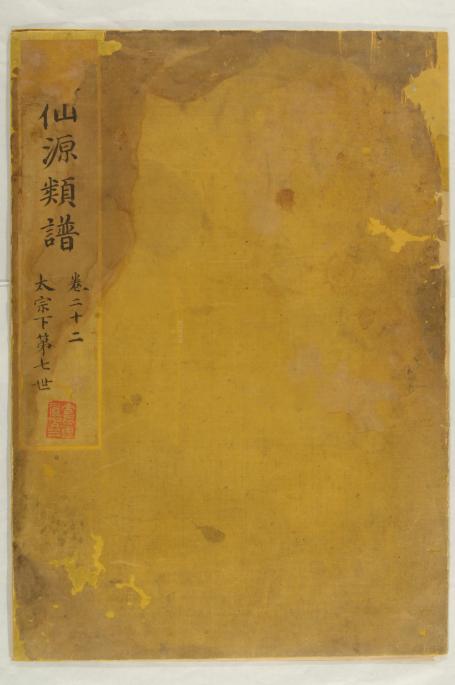
"Xianyuan Genealogy"
In the same exhibition area as "Xianyuan Lei Genealogy", there are also the Ming Dynasty's "Tianhuang Jade Certificate", the Qing Dynasty's manuscript "The Genealogy of Duo Luo Xunqin, the Fourteenth Son of Emperor Sheng Zuren" and "He Shuo, the Fifth Son of Emperor Renzong Rui" "Prince Dunke's Genealogy", two of which are the only surviving copies of the Qing Dynasty royal genealogy and are particularly precious.

Exhibition view "Genealogy of Prince Heshuodunke, the fifth son of Emperor Renzongrui" (copy)
A staff member of the Genealogy Department of the Shanghai Library told The Paper that royal jade certificates can often be used to learn about royal family disputes, the reproduction of heirs, and changes in power. They are rare historical materials for studying the royal families of the Ming and Qing Dynasties.
The second section, "Changes in the Ming and Qing Dynasties," shows the evolution of family trees in the Ming and Qing Dynasties. The Ming and Qing dynasties were the prosperous periods for the development of ancient Chinese genealogy books. During this period, the system of genealogy became increasingly complete, and the content became more abundant, such as routine catalogs, migration origins, genealogy charts, family rules and precepts, biographies, portraits, etc. In addition, there are not only genealogies, branch genealogies, and unified genealogies, but also genealogies compiled with a specific group as the main body.

exhibition site
There are seventeen genealogies in this exhibition area, which is the largest part of the exhibition and has many highlights.
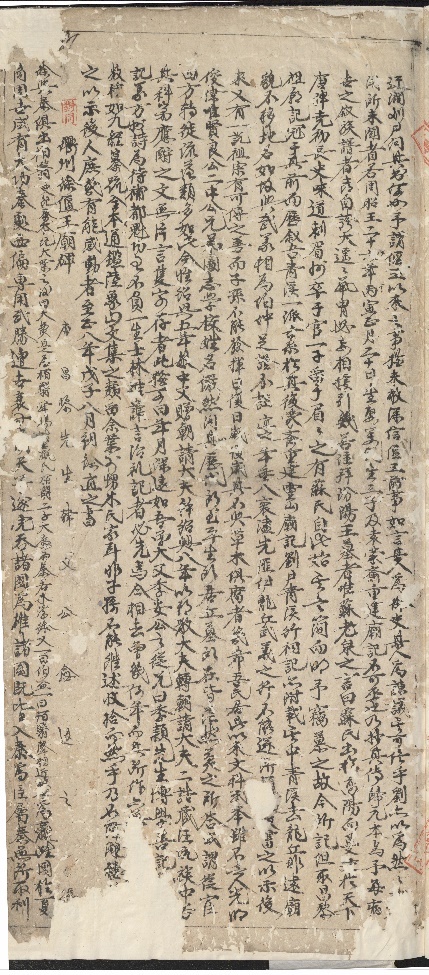
The half-leaf edition of "The Score of the Three Sects of the Xu Family in Qingxi, Fortune, Luxury and Longevity"
For example, "Xin'an Sun Family's Genealogy Revised" engraved in the fourth year of Chenghua in the Ming Dynasty (1468) is the earliest Ming Dynasty engraved copy in the collection; It is the largest family tree in the collection and the earliest existing family tree in the Zhejiang region. It is 62 centimeters wide, which is extremely large.

Picture of Peach Blossom Pond attached to "Genealogy of the Zhai Family in Shuidong, Jingchuan"
In terms of special genealogy, there is a female genealogy, the "Juexi Genealogy Supplementary Chapter" specially written for the biological mother of the Jin family in Juexi, which changed the genealogy of male-dominated genealogy; In addition to the general genealogy of the family, this genealogy is set up in addition to the "Shi Family Genealogy", which specifically records the names of the family members who have been taught by the family; there is also a family tree with clay movable type, which was made by Zhai Jinsheng of the Qing Dynasty by reprinting the old genealogy of the Zhai family in Shuidong from the Ming Dynasty with homemade clay type. The "Genealogy of the Zhai Family in Shuidong, Jingchuan" is a representative work of clay movable type printing.

"Xin'an Cheng Family Genealogy and Genealogy"
"Xin'an Cheng Family Genealogy" and "Huang Family Records" were compiled by famous scholars in ancient times. The former was written by Cheng Minzheng, a scholar in the Ming Dynasty, who pioneered the compilation of large-scale unified genealogies among the people; the latter was compiled by Huang Zongxi, a famous scholar in the late Ming and early Qing dynasties, who did not follow the ancient method of compiling genealogies and compiled biographies according to each branch.
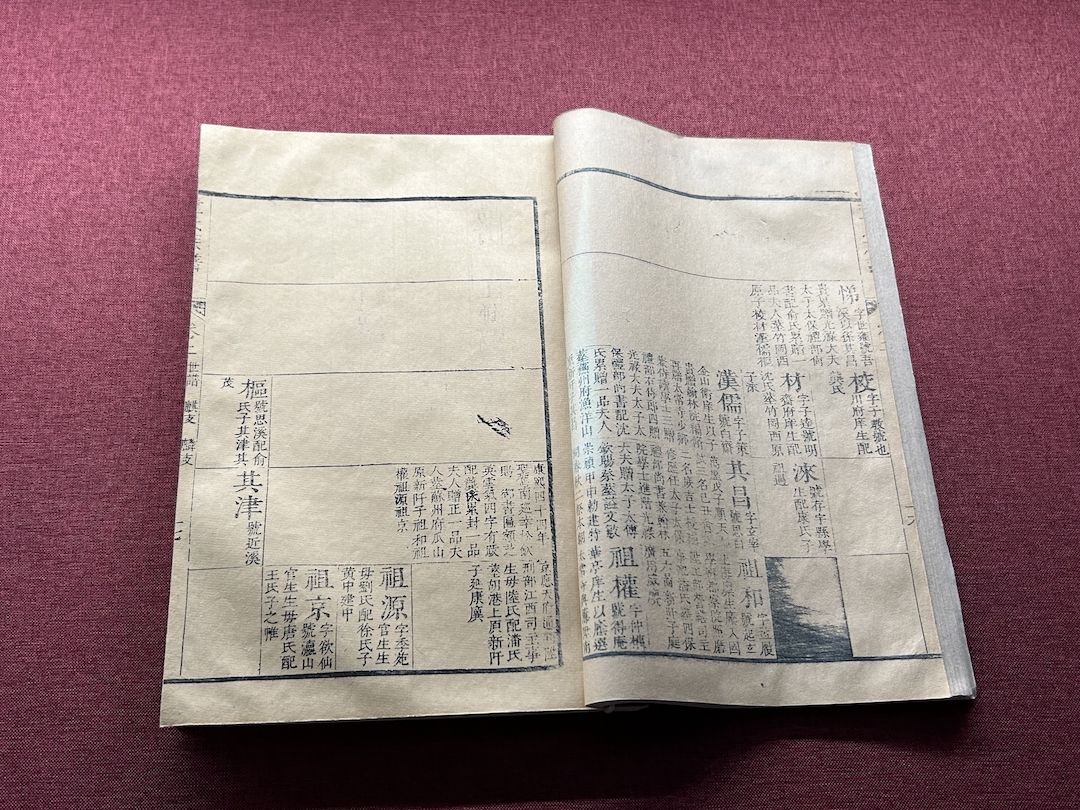
Exhibition site "Dong Family Tree" (copy) in Songjiang, Shanghai
This section displays works that are particularly closely related to Shanghai, such as "Dong Family Genealogy" in Songjiang, Shanghai. Dong Qichang, a calligrapher and painter in the Ming Dynasty, came from this family, and contains rich biographical information on Ming Dynasty figures; It is named after Lu Shen's former residence and ancestral tomb.
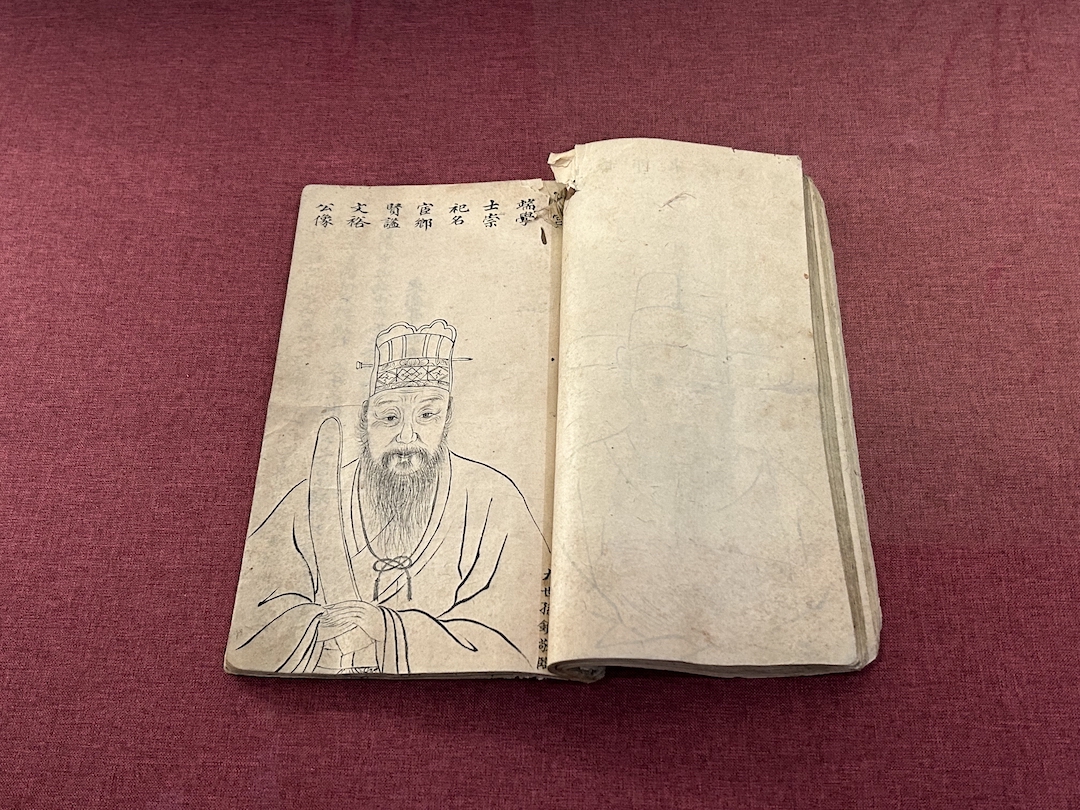
Exhibition site "Lu Family Genealogy" in Shanghai
The "Beiling Xu Family Genealogy" on display records that Xu Ruiheng, a member of the clan, participated in the first London World Expo with "Rongji Husi" in the first year of Xianfeng in the Qing Dynasty (1851) and won the gold and silver medals. Descendants of the Xu family submitted relevant information to the China Expo Application Committee and combined it with the genealogy information collected in the Shanghai Library to prove it, thus determining the time when the Chinese first participated in the World Expo.

Exhibition site "Beiling Xu Family Genealogy"
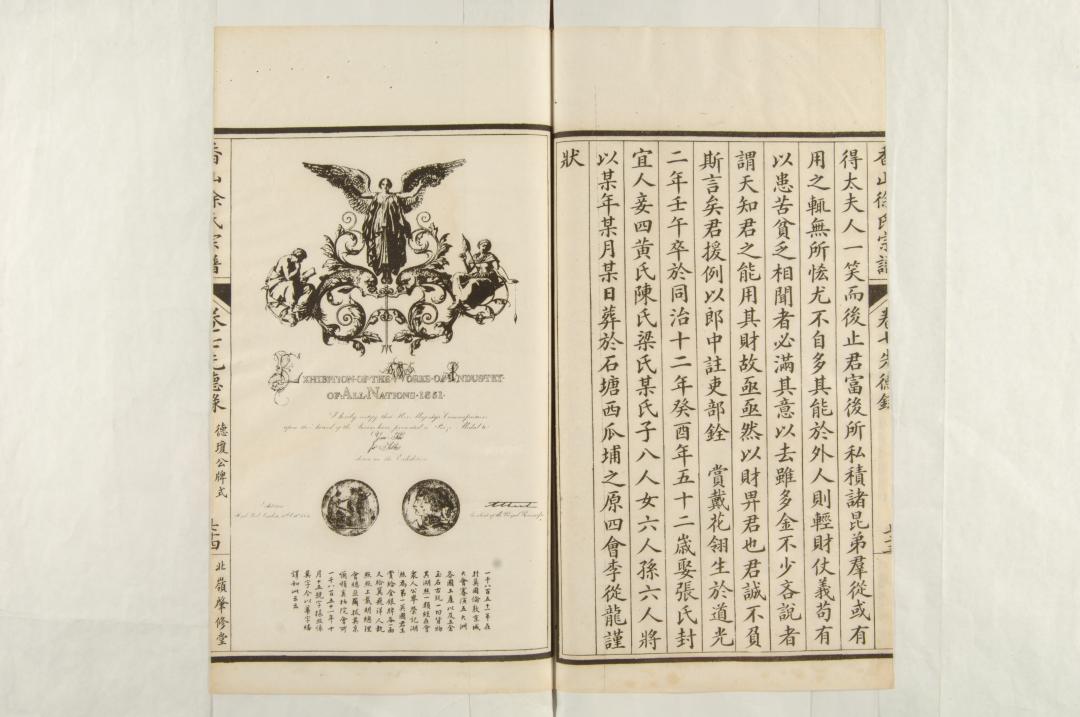
Contents of the World Expo contained in "The Genealogy of the Xu Family in Beiling"
"Dong Family Genealogy", "Lu Family Genealogy", and "Beiling Xu Family Genealogy" are also jointly launched by the East Hall Genealogy Museum and the Shanghai Key Laboratory of Literary Creation in the Virtual Environment of the Shanghai Theater Academy under the "Yueren·Yuecheng" Three trigger point spectra in the "Read the World" virtual digital exhibition project. At the exhibition site, as long as the audience puts on a lightweight head-mounted display device, it is like opening a door to a new world and instantly entering a space that combines reality and reality.

Staff are demonstrating the virtual digital exhibition project "Yue People·Yue City·Yue World"
"Lingyu Tongfeng" displays the genealogy of ethnic minorities and foreign countries. As a historical picture that records the lineage, characters and deeds of each ethnic minority family, ethnic genealogy provides the most vivid and original first-hand information for the formation of the diverse unity of the Chinese nation. Foreign genealogies written in Chinese characters are one of the evidences of the spread of Chinese civilization to foreign cultures.
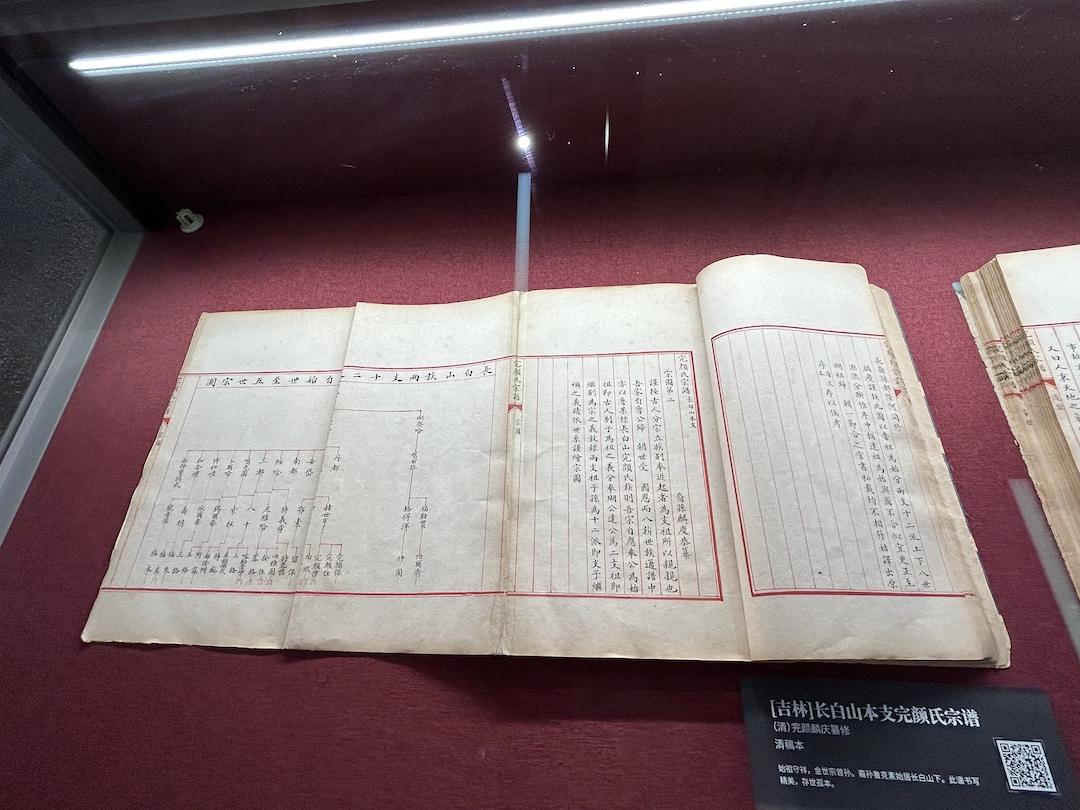
Exhibition site "Genealogy and Genealogy of the Wanyan Family of the Original Branch of Changbai Mountain"

"Gyeongju Kim Family Genealogy Preface"
The "Genealogy of the Wanyan Family of the Original Branch of Changbai Mountain" on display in this exhibition area is a revised manuscript compiled by Daoguang of the Qing Dynasty and compiled by the Manchu official Wanyan Linqing during the Republic of China. It is beautifully written and is the only copy in existence. "Gyeongju Kim Family Genealogy" and "Nanyang Yi Family Genealogy" are two Korean genealogies compiled in Chinese, both of which are copper movable type. "The Harada Family History of the Tibetan Courtier" is the only Japanese genealogy on display. The genealogy states that the founder of the migration, King Achi, was a descendant of the Han Dynasty. It also contains a large number of color pictures of people. It is an important witness to the cultural exchanges between China and Japan in ancient times. .
[Note: Due to exhibition conditions, some exhibits are copies]